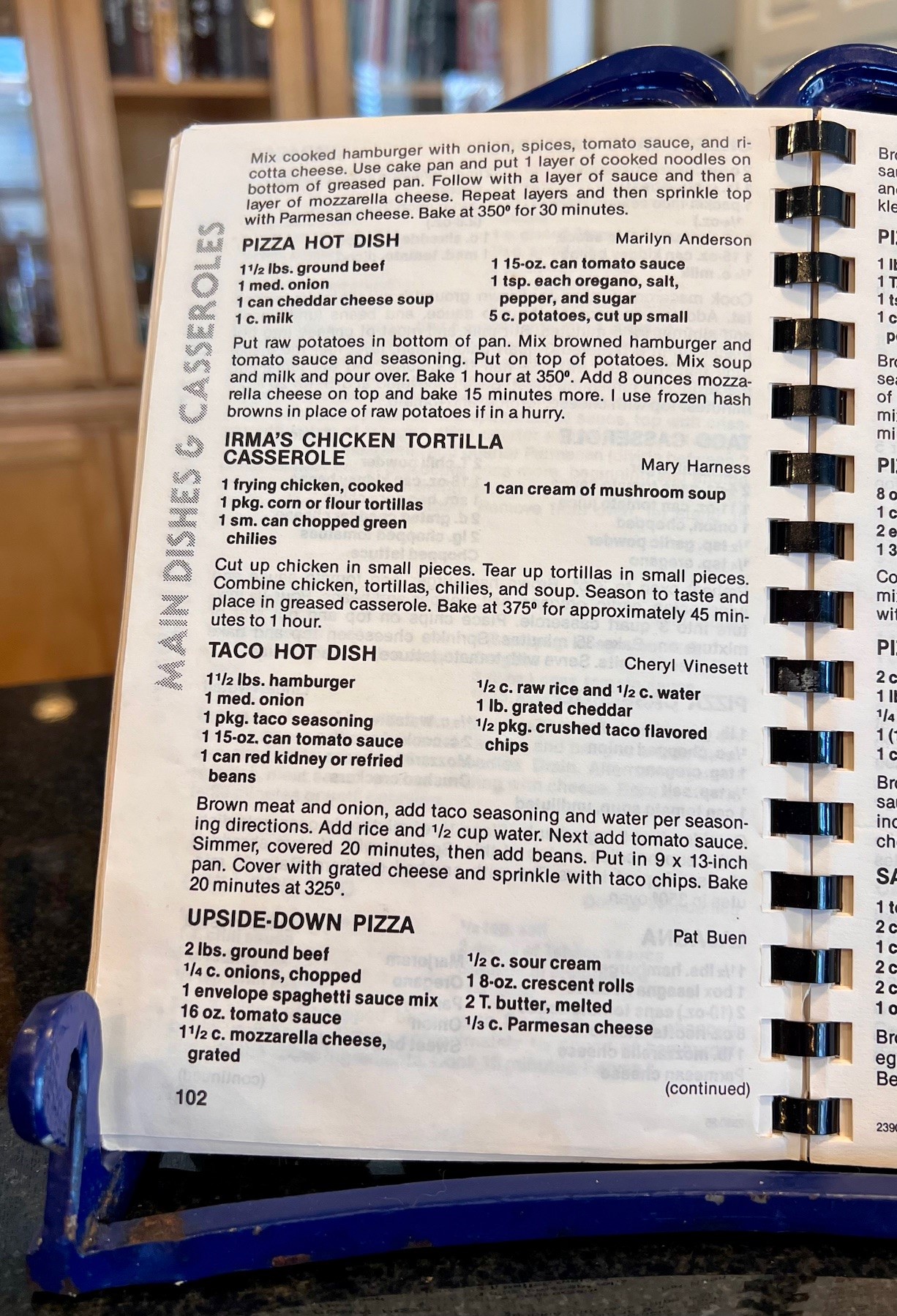When my daughter had a play date with her friend from down the street, I decided to make Mary Harness’s recipe for “Irma’s Chicken Tortilla Casserole” for lunch, along with Susan Wolff Anderson’s “Fruit Dip / Fruit Platter” to encourage ample fruit consumption (stay tuned).
“Irma’s Chicken Tortilla Casserole” is quite a name for a quite a dish—a completely unexpected mashup. Add one Germanic given name, the staple flatbread of Mexican cuisine, and the ubiquitous Midwestern can of cream of mushroom soup, then stir. Literally.
Very Easy to Mix Up!
As it relied upon pantry staples, this chicken tortilla hotdish was easy to whip together. The recipe specifies “1 frying chicken, cooked,” and the first instruction is to “Cut up chicken in small pieces.”
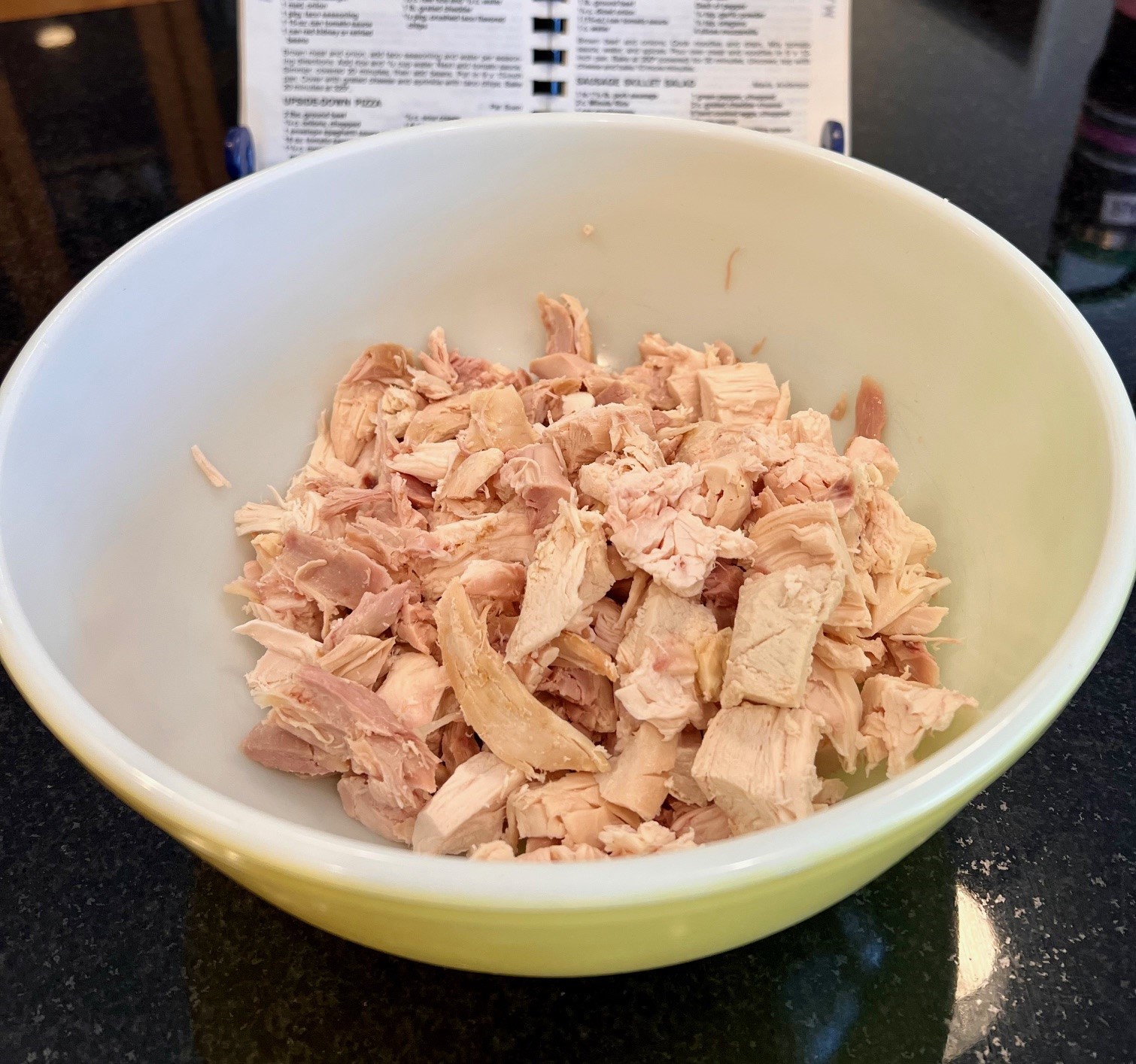
I used this as an invitation to use up the rest of a rotisserie chicken, and I imagine Mary or any cook making this casserole after purchasing the cookbook would do the same with any leftover chicken or game bird. Similarly, I substituted half a cup of a chunky tomatillo salsa, made with chopped green chilis and tomatillos, and used my remaining four corn tortillas and then seven more flour ones. I wasn’t sure what one package of tortillas entailed in 1985, and so I estimated the amount, tearing up enough to be about two thirds of the chicken.
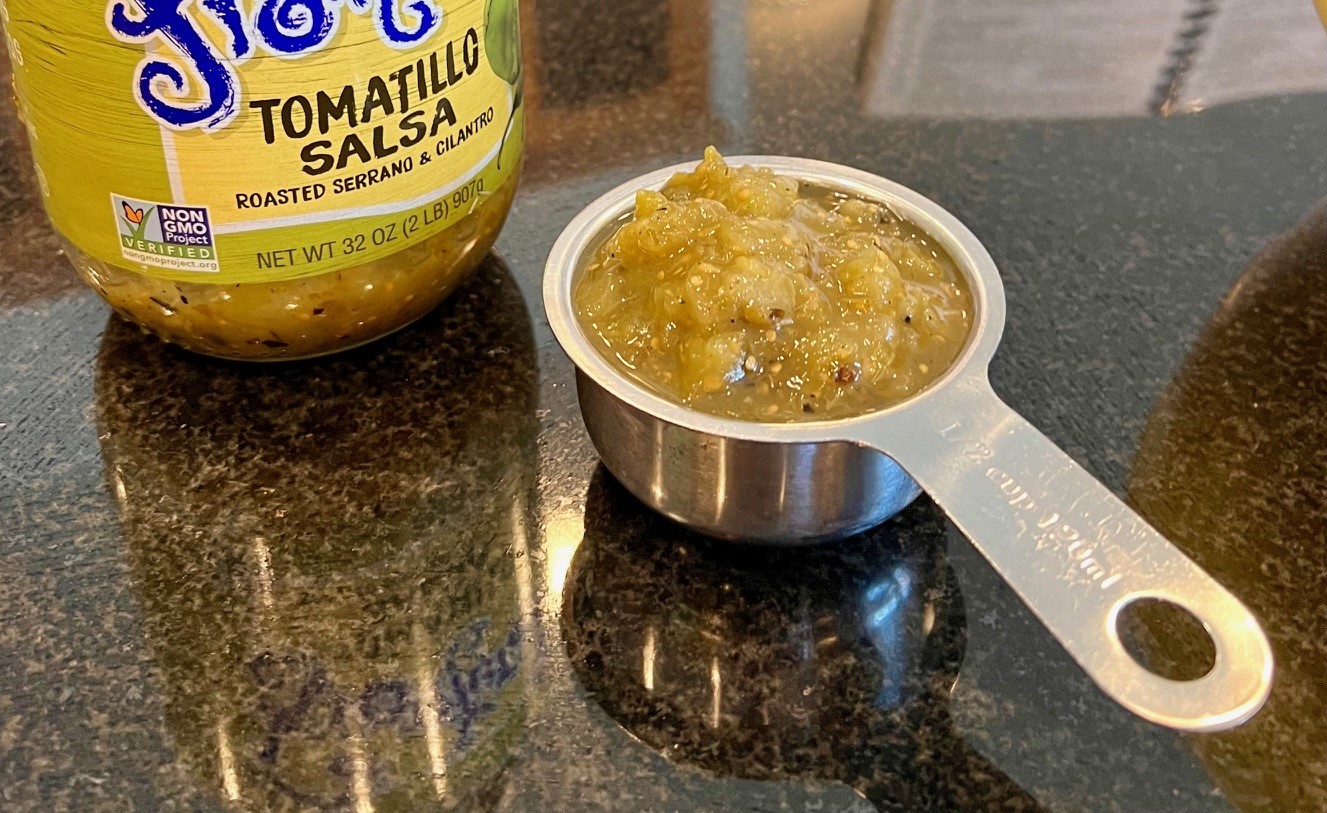

After adding the can of cream of mushroom soup to the same bowl (another efficient element of this recipe), I blended them as best as I could and spread it in a pan to bake, setting the timer for the lower end of the recommended cooking time of 45 to 60 minutes.
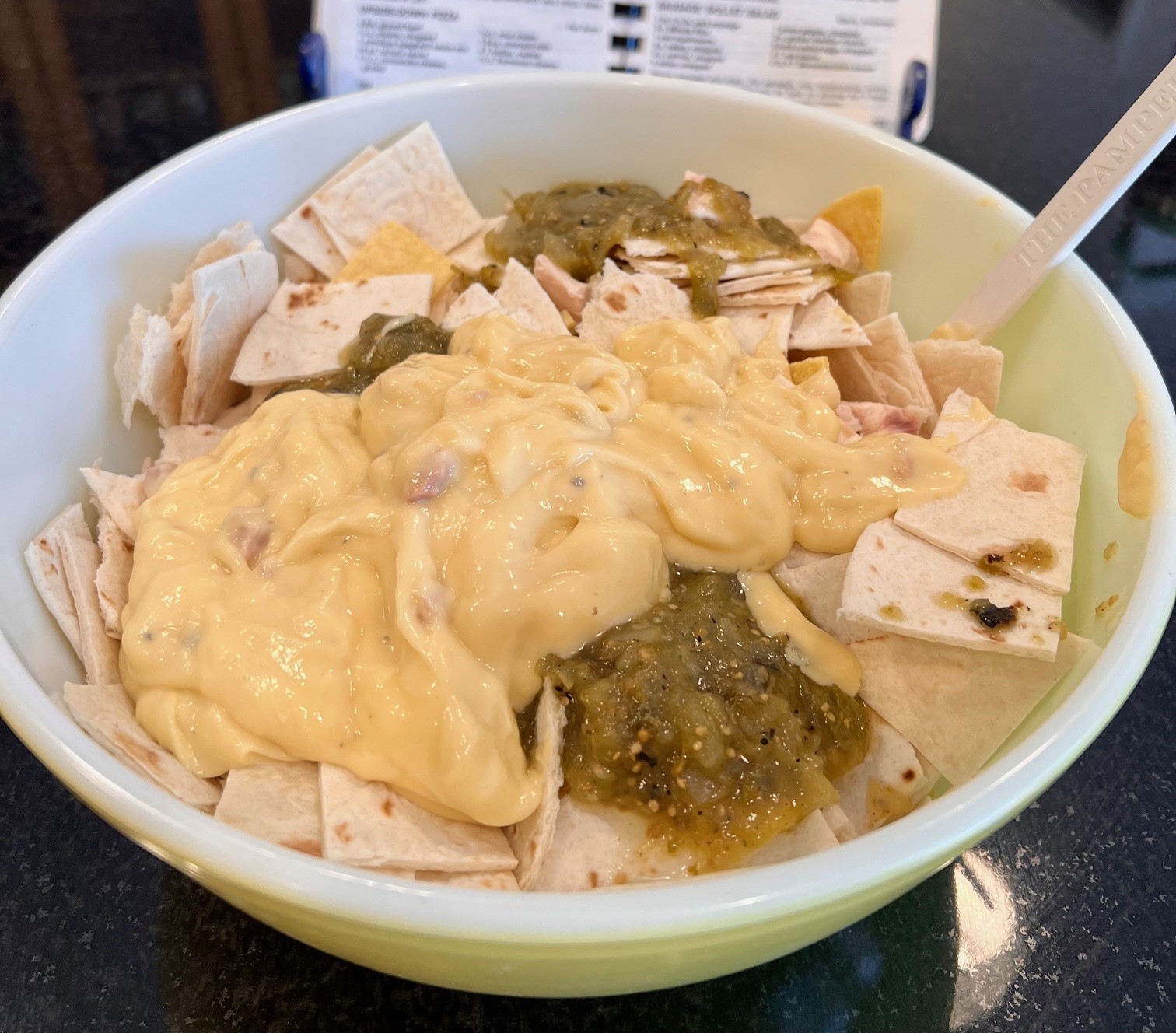

After 45 minutes, I took the liberty of adding shredded quesadilla cheese to the top and switched the oven to broil to ensure the casserole browned slightly on top.
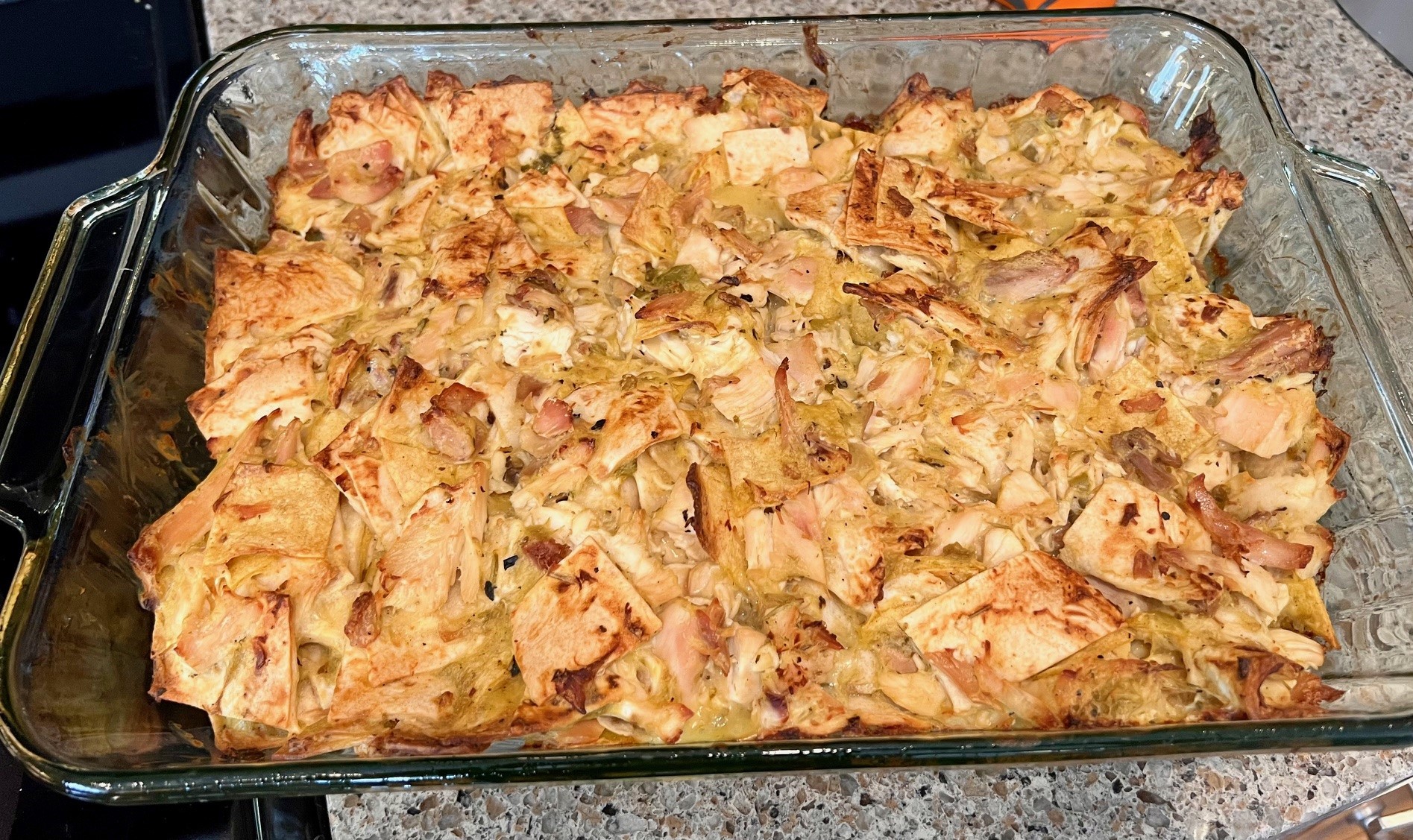

As I plated it, I noted that it was crispy on the edges and decided to use a probe thermometer the next time I made it. I added cilantro to the top prior to serving it to provide some much-needed color.
Feedback
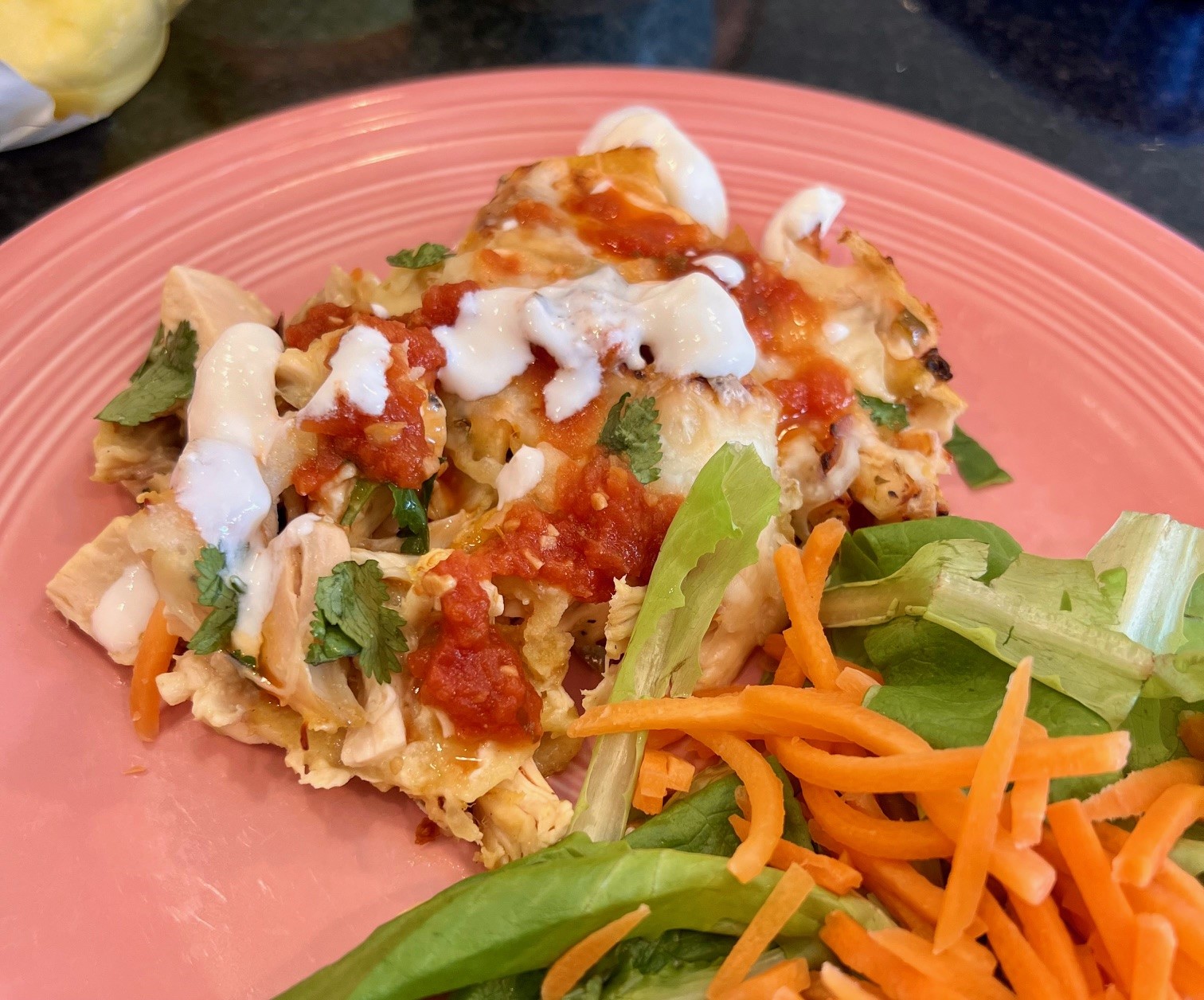
Of the chicken tortilla casserole, the two girls said, “it had a good flavor.” My daughter liked the chicken, and her friend even thought some spice would be useful. They both thought it was “filling,” and also preferred the interior pieces, since they were softer and less crispy. I piled the servings for the adults with hot sauce, as well as salsa and sour cream. My notes indicate that I thought it was “pretty good—could be creamier,” which makes sense—a lot of potentially dry ingredients—chicken and tortillas—are blended with only one can of soup.
My husband said, “it was a hotdish.”
Point taken.
Musings
I still find it strange to add cream of mushroom soup to this recipe, but I find that a “cream-of-blank” binding is common in the Mexican-inspired casseroles in other community cookbooks too—Fun Cookin’ Everyday, published by the North Dakota Association for Family and Community Education, which I wrote about in my post about crouton-hamburger hotdishes (see https://blog.cord.edu/karlaknutson/2024/09/05/crouton-hot-dish-casserole-or-hamburger-crouton-hot-dish/), has recipes for “Southwestern Chicken,” using a béchamel-style thickening mixture of egg, milk, and flour, as well as a chicken enchilada recipe using two cans of cream of chicken soup. And the women’s group in Montpelier, ND, recommended this combination too; in the 75th Anniversary Cook Book: 1905-1980 by A.L.C.W. of the Montpelier Lutheran Church, Evelyn DeBuck’s “Chicken Tortilla Casserole” prescribes both cream of mushroom and cream of chicken soups. In an exciting additional step, Cristal Aljoe’s “Green Enchiladas” uses three canned soups: cream of chicken, cheddar cheese, and onion, though she notes that the cook can substitute an actual chopped onion for the onion soup.
For similar dishes using hamburger as the protein, these cookbooks are more likely to recommend a canned cheese soup, like the recipe for “Mexican Lasagna” contributed to Fun Cookin’ Everyday by the Weimer FCE Club, which prescribes 2 cans of fiesta nacho soup, or an industry cookbook like Campbell’s Classic Recipes (2000), recommending the company’s tomato soup to bind the ingredients of “Beef Taco Bake” (an unappetizing title, certainly).
But is cream of mushroom the right one? Why not chicken or celery, which adds some pizazz? It’s not like the mushrooms become integral in the texture or flavor, given how small the pieces in the canned soup usually are.
I love Mexican food so much. As I’m always in the mood for it, I seem to suggest it for dinner almost every evening or plan Mexican-inspired meals, without realizing that we just had it for our last meal. It drives my family nuts. But they love it too, and its why we are eagerly anticipating our upcoming trip to Mexico, our fourth in the last four years, again to an eco-resort with a garden and farm onsite. Food is a large part of how and why we travel—it’s the impetus and the experience.
And we’re not alone—people explore world cuisines through travel and instead of traveling—it’s like reading, really. We read and eat to learn more about other people and places, whether we get to go visit or not. And people in the United States love Mexican and all Latin American food: numerous headlines every year proclaim Americans’ love for tacos and salsa as our favorite condiment. The Atlantic made a case that it’s been so since at least 1992: https://www.theatlantic.com/national/archive/2013/10/actually-salsa-dethroned-ketchup-20-years-ago/309844/.
The Mexican and Asian-inspired recipes commonly found in twentieth-century community cookbooks reflect the increasing interest in food from around the world, which Megan J. Elias notes was present in American cookbooks since the end of the eighteenth century but flourished in the 1950s. In Food on the Page: Cookbooks and American Culture, Elias notes that corporate cookbooks encouraged an approach later called “fusion,” an “openness to blend new flavors, textures, and techniques with more established materials and methods and to borrow from the global kitchen” (114).
We certainly see this openness and creativity in the previously mentioned recipe titles from ND community cookbooks and in the dishes themselves too, using canned soups instead of fresh or even canned enchilada sauce and only green chilies for flavor and spice. Maybe Irma and Mary assumed that any cook would serve it with hot sauce, sour cream, guacamole, cilantro, and so on.

“Irma’s Chicken Tortilla Casserole” is a fusion, a mash-up of a Germanic given name, meaning “universal,” “complete,” or “entire,” according to the baby-name section of thebump.com. It’s not a name you expect to see associated with Latin American cuisine, but this fusion can be construed as indicative of Irma’s curiosity. Less so when Mr. Rochester renames his wife Antoinette with the Germanic appellation, “Bertha,” in Wide Sargasso Sea, prior to locking her away in the attic of Thornfield Hall, while claiming that she is “mad.” That’s an act of cultural appropriation (and domestic abuse and a whole slew of other crimes, of course), an attempt to transform her into something more recognizable to him—a European, rather than a Caribbean woman. Who expected this connection in a post about playdate fare?
“Karla’s Chicken Tortilla Casserole”
So I decided to redo this for lunch one Friday, but to my liking. I tore up both rotisserie chicken and corn tortillas, added a can of Rotel tomatoes and chilies, a can of cream of celery soup, as well as some taco dip from the grocery store, hot sauce and taco sauce, and cilantro.
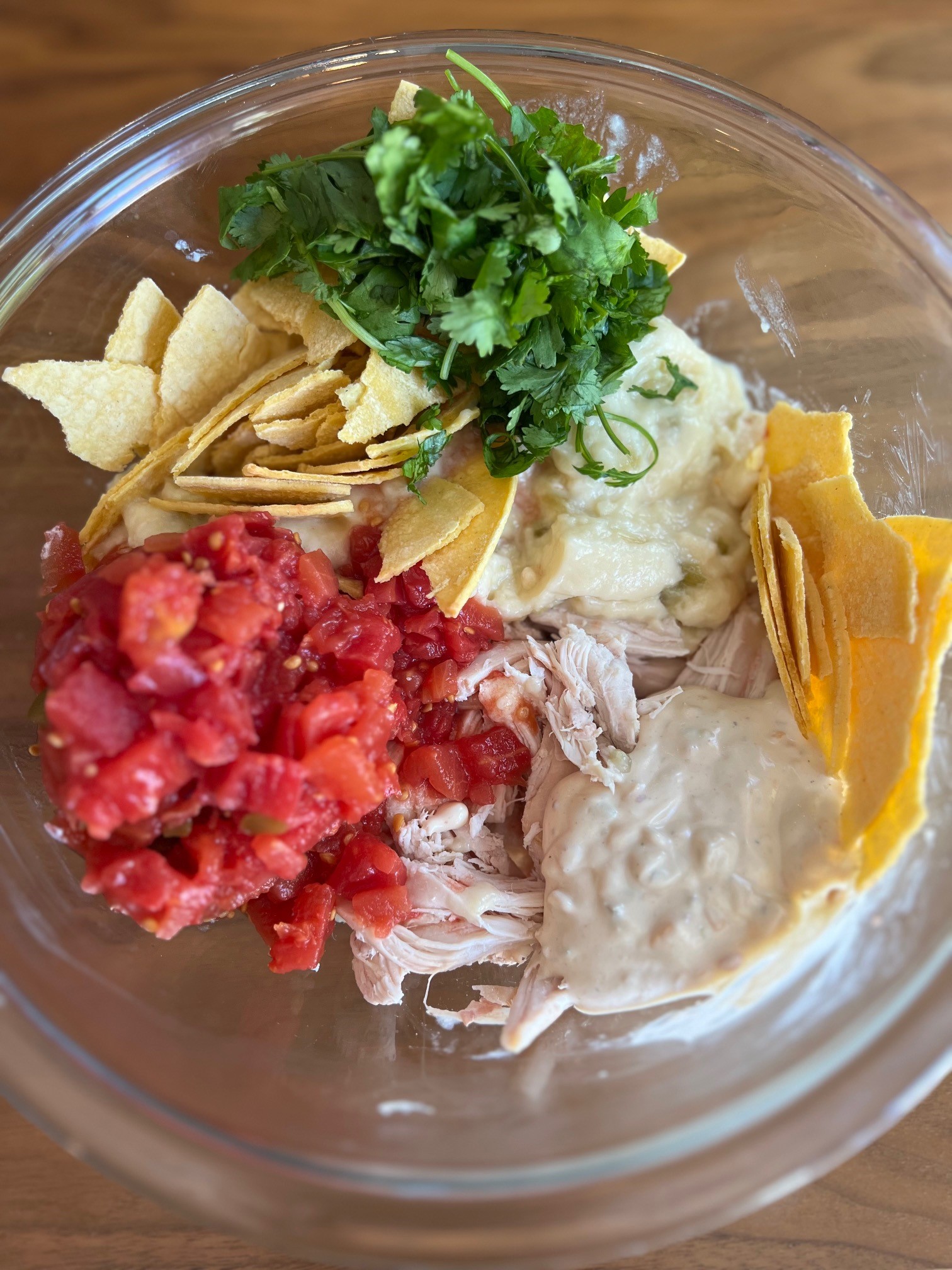
I thought needed more liquid last time and took care to ensure the mixture seemed moist. To that end, I also put it in a smaller baking dish and checked it after twenty minutes.
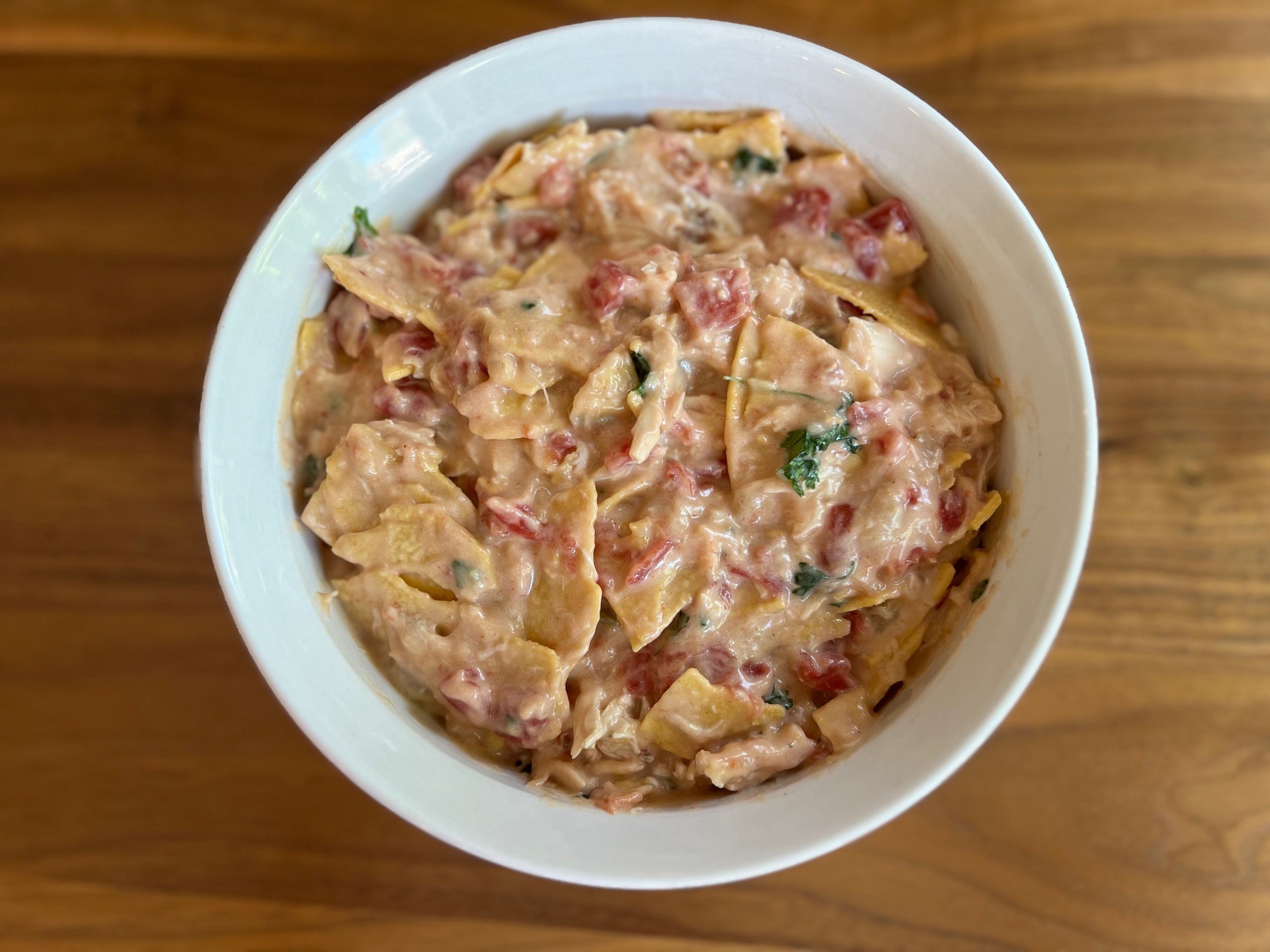
Since it was only at 94 degrees, I reset the timer for another fifteen minutes, at which point it had reached a temperature of 142 degrees and was beautifully bubbly around the edges. After another ten minutes, it was at 157 degrees; I added cheese to the top, let it bake for 5 more minutes, and it achieved a temperature reading of 167 degrees.
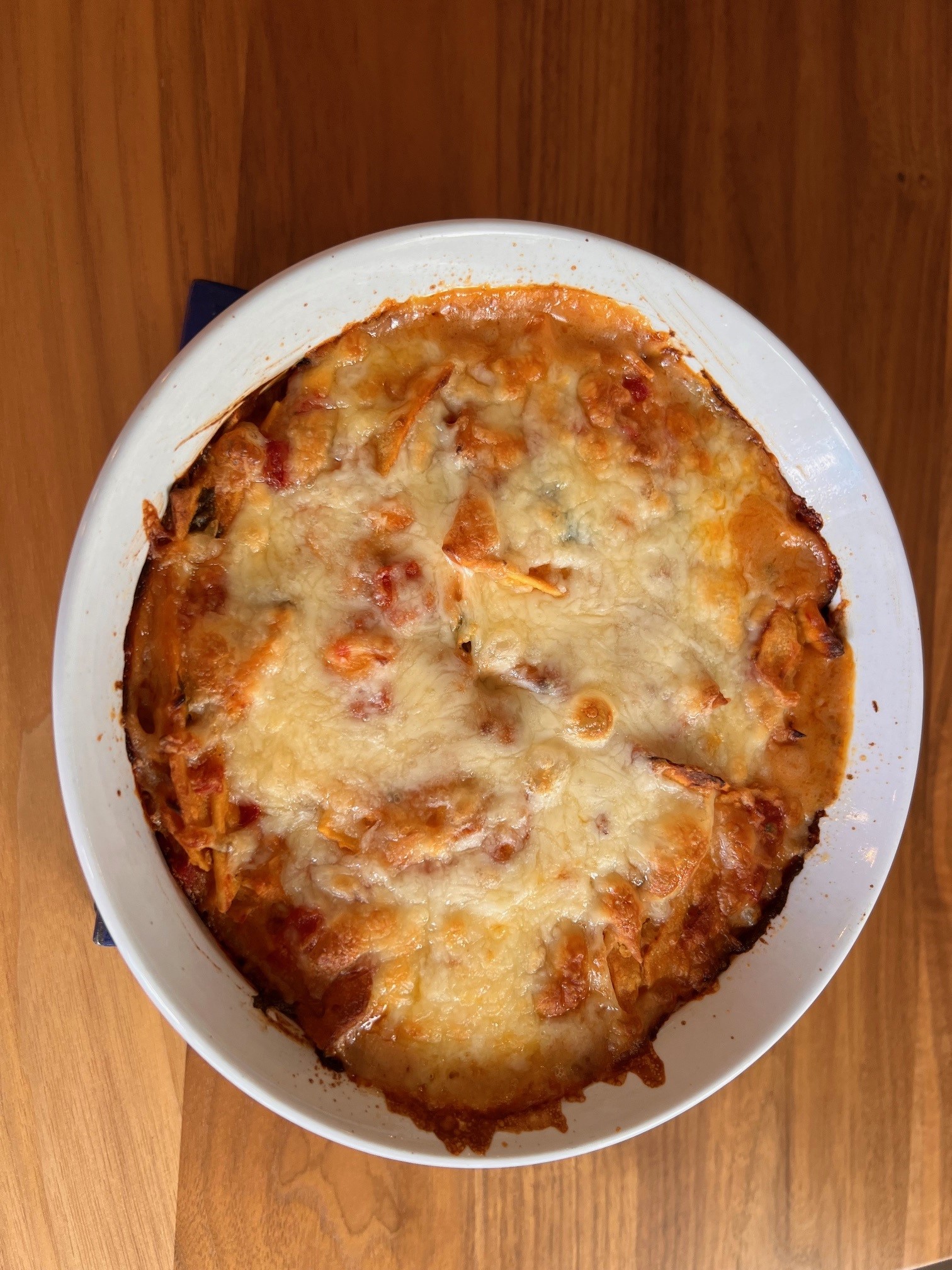
After letting it cool, I served it with more cilantro, guacamole and sour cream on the side, and the ubiquitous green salad found on dinner plates in my home. And it was great! Creamy this time, with a kick. I’d make it again, but skip the canned soup and use enchilada or some other sauce instead.
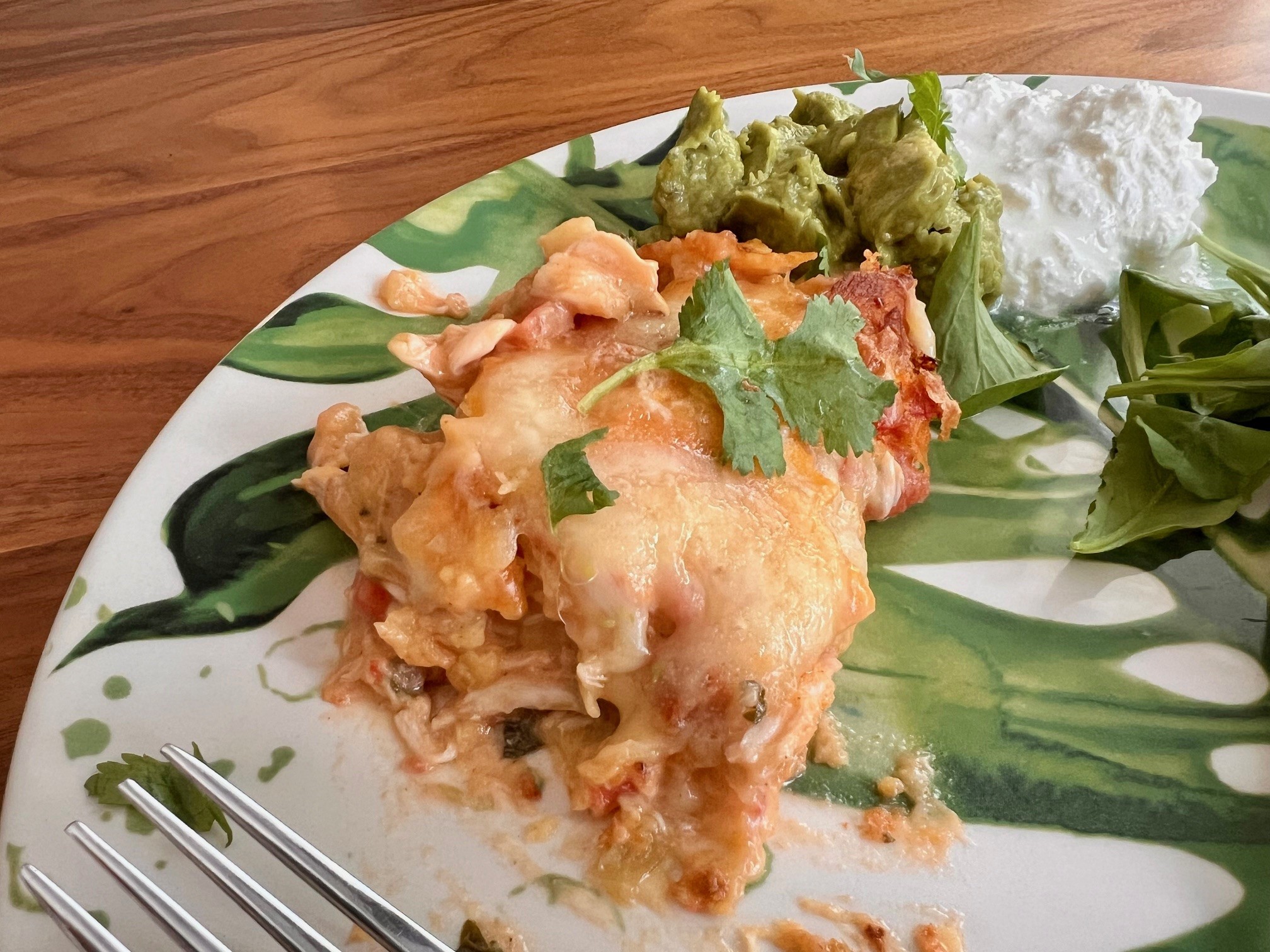
Contributor: Mary Harness
Mary Harness’s other contributions to The Joy of Sharing are Old Fashioned Pound Cake (1875 New England)” and “Mexican Spoon Bread.” Is Mary a Mexican food enthusiast like me?
Well, she may be, since she lived in Tucson, Arizona; the southwestern part of the United States is associated with Mexican and Latin American cuisine. Mary’s parents were Emil and Margaret (Thompson) Harness, who farmed north of Velva in the North Prairie Township; Margaret also was a bookkeeper. Mary and her brother Mark grew up on their farm, prior to Mary attending Concordia College (yay), graduating with a degree in medical technology. In 1985, she contributed to The Joy of Sharing from afar, living in Tucson and working as assistant supervisor of hemotology at Tucson Medical Center. She still resides in Arizona. My dad mentioned that her aunt Lorraine Thompson (see https://blog.cord.edu/karlaknutson/2023/06/27/aunt-ellens-carrots/) was his third grade teacher and was absolutely wonderful.
I’m not sure who Irma might be, as I cannot find an Irma in McHenry County: Its History and Its People. Perhaps she’s from Arizona? Or perhaps a television or media personality? In any case, I’m glad Mary cites her sources.
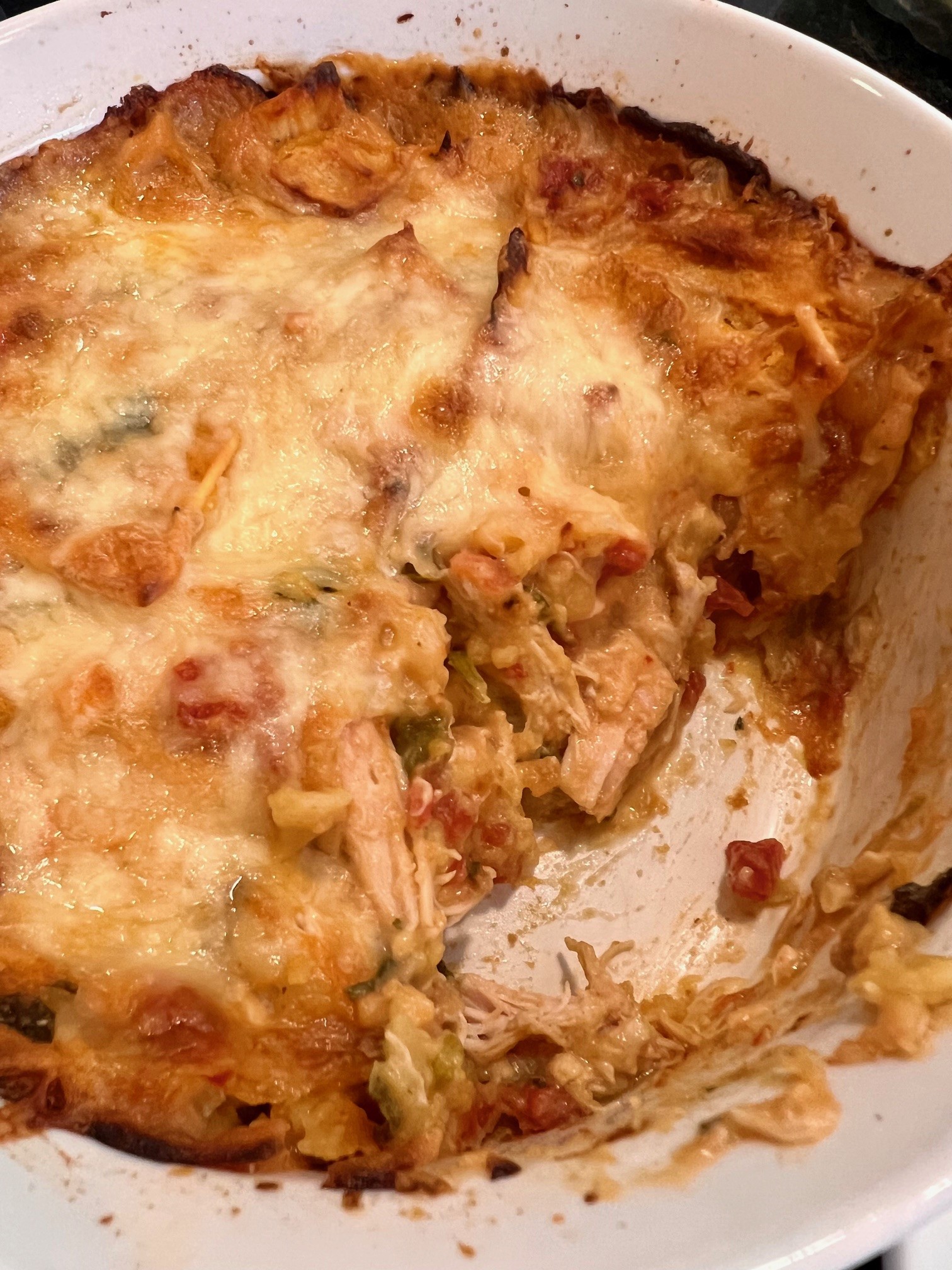
This post is part of an ongoing series in which I make and reflect on recipes and the people who contributed them to the 1985 Oak Valley Lutheran Church compiled cookbook, The Joy of Sharing.

